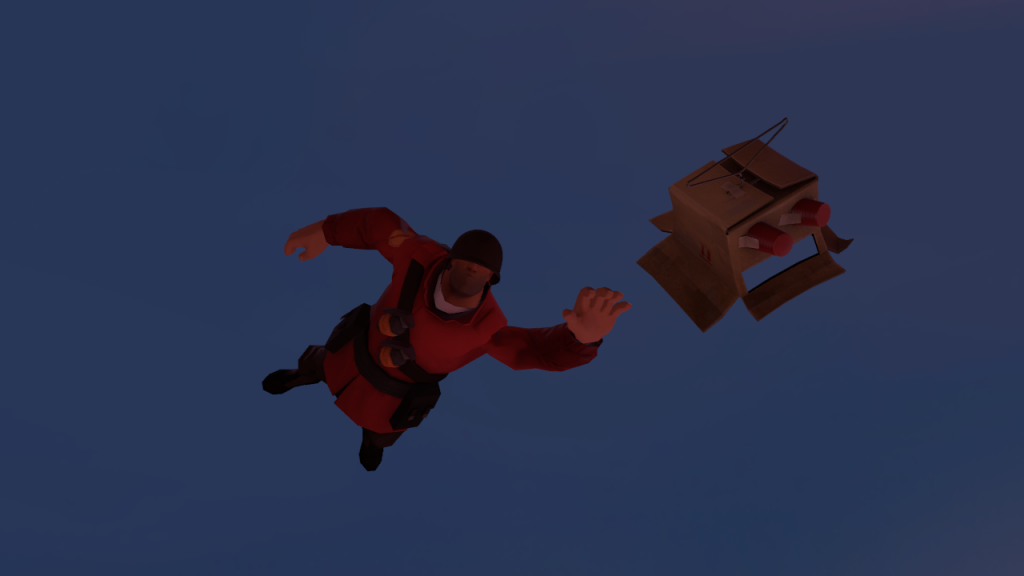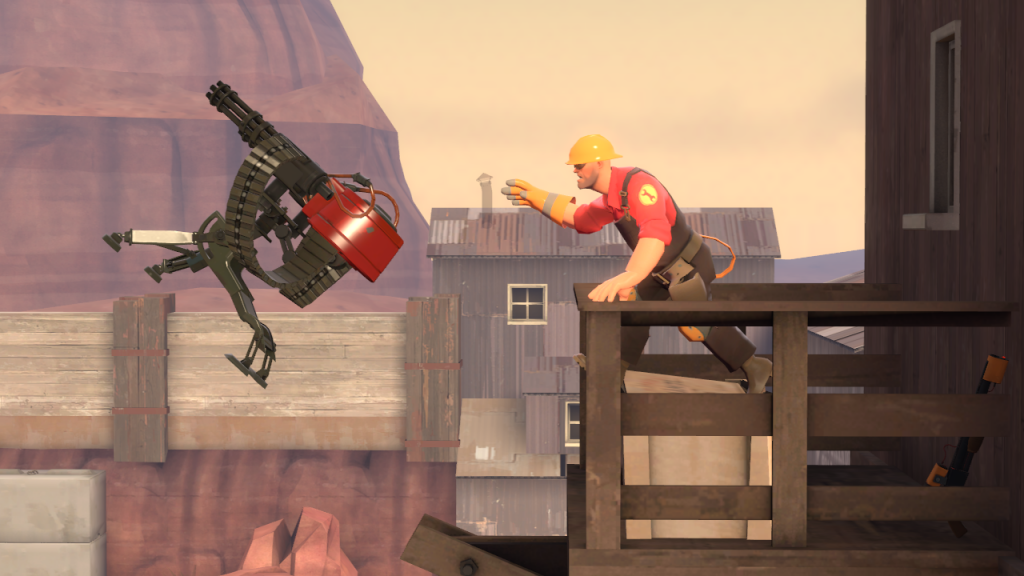Dekky’s introduction to Astrophysics
If you’ve listened to Episode 2 of The PhlogistiCast, you may have noticed the distinct lack of a warning label reading ‘May contain incorrect physics and positive statements about Scout.’ Since we recorded it live, mistakes were bound to happen. A couple of things slipped through the Net of Correction and, being the studious straight-A nerd I am, I couldn’t sleep until I laid them to rest.
By the way, if you haven’t listened to that episode, here is a link so you no longer have to wear a bag of shame.
With the recent beta release of rd_asteroid, the question of a low-gravity map has been bugging many players. Episode 2 was recorded just before this update, so when our friend Aabicus described his concerns about low-grav servers, we only had the four sentences about ‘Moonbase’ and a concept sketch to go on. He said that a game in which low-grav wasn’t permanent, but only kicked in when a point was captured or intelligence stolen, would be a better idea.
Now we have Asteroid, in which you get points by either smashing up robots or stealing a reactor core. The core is the equivalent of an intelligence briefcase. Here’s the thing; when you snatch the core and attempt to run out through that laser trap, gravity doesn’t suddenly disappear as he suggested it might. Nor does it do this at any time. Gravity throughout the map is still normal. Yet in certain places, especially around the doorways leading outside, one can see little sprite stones that float by like bubbles in Coke. What’s up with that?
I believe the map designers are attempting something very clever with this map. The fact a player sees pebbles devoid of weight, yet themselves behave just like on Earth, probably means they’re considering low-grav possibilities very carefully. They just haven’t implemented them yet. Why not?
Well, notice the name of the map is rd_asteroid. RD stands for Robot Destruction and is an entirely new gamemode. When have we ever had to destroy little robots for points? Never. So the development team needs to know whether this new mode is going to be fun – on any map. In the future it could be implemented on Earth-based maps.

They’re just using the scientific method, testing one thing at a time to see what changes. Right now they want to test the new gamemode. If Asteroid already had full-on moon-level gravity, that would be a hopeless endeavour, because they’d be trying to test two variables instead of one. It would be much more efficient to nail the Robot Destruction business, then experiment with lower gravity. Settled?
Now, what would happen if they did implement low gravity? Aabicus has done a good job of considering the possibility in this article. I agree with his idea that gravity could be lowered in just the rocky area under the bridge, while being kept normal everywhere else. That way players can avoid the floaties if they choose. Maybe the central bridge and two bases contain artificial gravity generators which could be temporarily switched off. There are many options for the developers.
Anyway, before Beta Asteroid was revealed, I did some thinking about how a moonbase map might work. I know, thinking isn’t something I often do. The assumptions I made were as follows:
-
Air is circulated through the base which is identical to air on Earth, critically having the same density.
-
The ‘moonbase’ is situated on a moon of the same size as the Earth’s, with one-sixth normal gravity.
-
Sandvich om nom nom nom.
Now, the current Asteroid map leaves both bases exposed to the nonexistant atmosphere of the rock they’re stuck on, but I’ll still assume that somehow air is circulating through them. Under the above conditions, all players can jump up to three times higher than normal. Scout’s double-jump, Pyro’s Detonator, Soldier’s rockets and Demoman’s stickies would easily send them through the ceiling.
All projectiles would have their range increased by six times. The Stickybomb Launcher is a tricky one: there’d be no point charging it up because it would fire stickies around the asteroid and back anyway. Grenades, flares, Jarate and syringes would practically have the same range as rockets. Just imagine a jar of Sniper wee flying that kind of distance. Since the launching/throwing mechanisms used are the same, they’d still have the same launch velocities.
There was one new piece of equipment which really interested me: the BASE Jumper. How would a parachute behave in this environment? You’ve probably heard of this cool thing called terminal velocity, the speed which a falling object cannot exceed once reached. It depends on the density of whatever it’s falling through and the shape, size and weight of the object. Light, flattish things like parachutes are designed to catch the air and slow down, so they have very low terminal velocities.
According to the TF2 Wiki, the terminal velocity granted by the BASE Jumper is 4.8 miles per hour. In moon-type gravity, that figure drops to 2 mph. I assumed there was Earth-like air in the bases because, well, even video game characters need to breathe. This means that ONLY gravity’s strength has changed, meaning the BASE Jumper will always lower you down at 2 mph. You’ll be up in the air for over twice as long, giving Snipers twice as many opportunities to get that new achievement for blowing a paratrooper’s brains out.
I’ll finish by saying that, as I explained to my co-host Nommy, the thing with the Jumper staying at the same height while you’re on fire is not a bug. It would still work in a moonbase filled with air: the fire heats up that air, causing it to expand and push you up, negating the falling speed of the parachute.
These people at Valve know their physics: they’re the guys who gave us the other masterpieces that make up the Half-Life and Portal series. From the Gravity Gun to the Thermal Discouragement Beam, examples of awesome research effort are everywhere in these games. So instead of grumbling while waiting for the next update, why not take a few moments to praise those geniuses who have gifted us with such great mechanics to play around with?
That’s enough of that for now, I’ve got some robots to beat up.
